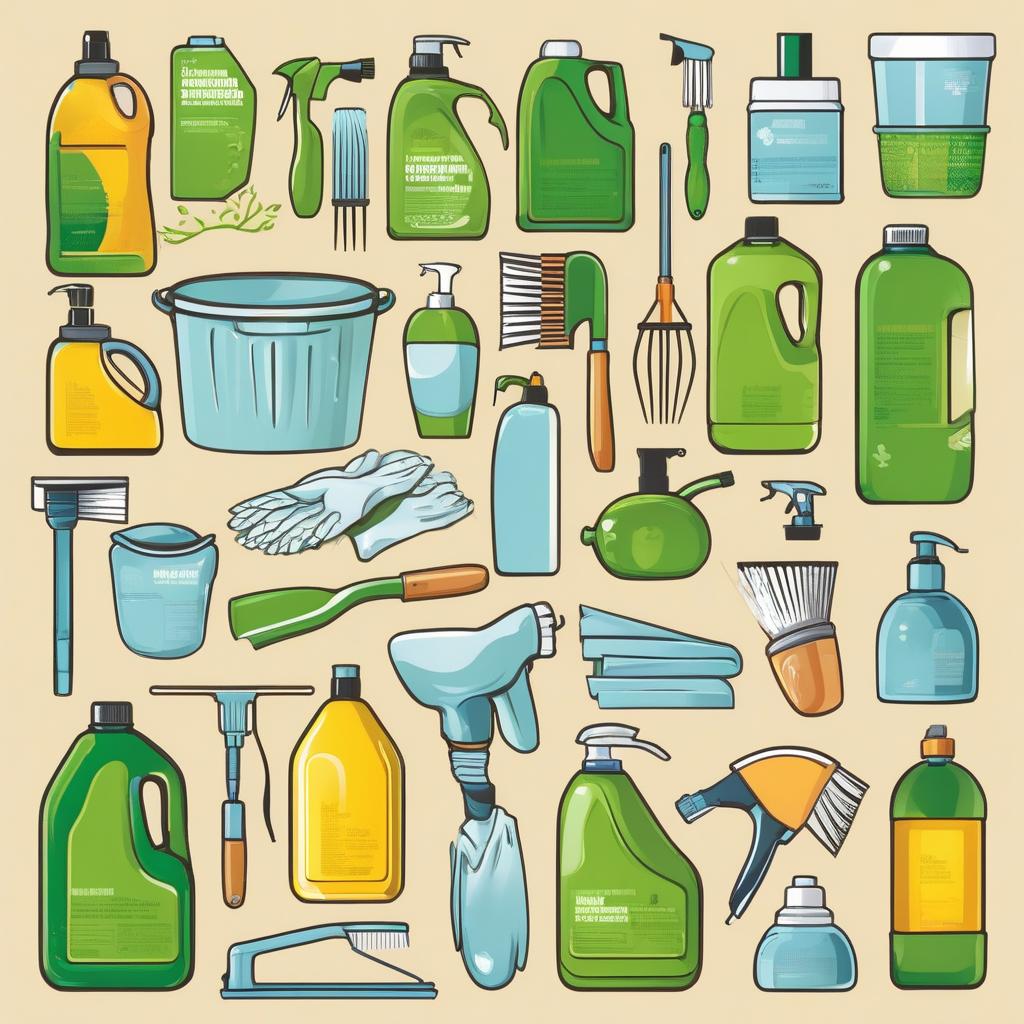Are you passionate about protecting the planet while keeping your home sparkling clean? Look no further! In this guide, we’ll dive into the world of eco-friendly cleaning products, exploring how you can develop and sell your own line of environmentally friendly cleaners. From sourcing sustainable ingredients to creating effective formulas and marketing your products, we’ve got you covered every step of the way.
Understanding the Importance of Eco-Friendly Cleaning Products
Before we delve into the nitty-gritty of developing eco-friendly cleaning products, let’s take a moment to understand why they’re so important. Traditional cleaning products often contain harsh chemicals that can harm both the environment and human health. From toxic fumes to water pollution, these products have a significant impact on our planet.
Eco-friendly cleaning products, on the other hand, are formulated with natural, biodegradable ingredients that are safe for the environment and gentle on your home. By switching to eco-friendly cleaners, you can reduce your carbon footprint, minimize exposure to harmful chemicals, and contribute to a healthier planet for future generations.
Identifying Your Niche and Target Market
Before you start developing your eco-friendly cleaning products, it’s essential to identify your niche and target market. Consider who your ideal customers are and what specific needs or preferences they have when it comes to cleaning products. Are you targeting environmentally conscious consumers, busy parents looking for safe cleaning options, or businesses seeking sustainable cleaning solutions?
To help you narrow down your niche, here are a few potential target markets for eco-friendly cleaning products:
| Target Market | Description |
|---|---|
| Health-conscious consumers | Individuals who prioritize their health and seek non-toxic cleaning alternatives. |
| Environmentally conscious consumers | People who are passionate about sustainability and reducing their environmental impact. |
| Parents and pet owners | Families looking for safe and gentle cleaning products for their homes. |
| Commercial and institutional clients | Businesses, schools, and healthcare facilities seeking eco-friendly cleaning solutions. |
Once you’ve identified your niche and target market, conduct market research to understand their preferences, pain points, and purchasing behavior. This information will guide your product development and marketing strategies.
Sourcing Sustainable Ingredients
When it comes to developing eco-friendly cleaning products, the ingredients you use are crucial. Look for natural, biodegradable ingredients that are derived from renewable sources and produced using sustainable practices. Avoid synthetic chemicals, petroleum-based ingredients, and ingredients that are harmful to the environment.
Here are some common eco-friendly ingredients used in cleaning products:
- Vinegar
- Baking soda
- Citric acid
- Essential oils (e.g., lavender, tea tree, lemon)
- Castile soap
- Cornstarch
When sourcing ingredients, consider factors such as ethical sourcing, fair trade practices, and certifications such as USDA Organic or EcoCert. Building relationships with reputable suppliers who share your commitment to sustainability is key to ensuring the quality and integrity of your products.
Developing Effective Formulas
Creating effective eco-friendly cleaning formulas requires careful experimentation and testing. Start by researching existing recipes and formulations for inspiration, then experiment with different ingredient combinations and concentrations to find the right balance of effectiveness and safety.
Here are some tips for developing effective eco-friendly cleaning formulas:
- Start with simple recipes and gradually refine them based on feedback and testing.
- Consider the specific cleaning needs of your target market (e.g., removing grease, disinfecting surfaces) when formulating your products.
- Test your formulas on a variety of surfaces to ensure compatibility and effectiveness.
- Consider partnering with a chemist or formulation expert to help you develop and refine your formulas.
Once you’ve developed your formulas, conduct thorough testing to ensure they meet your quality standards and regulatory requirements. This may include stability testing, efficacy testing, and safety testing to ensure your products are safe and effective for use.
Creating Sustainable Packaging
In addition to using eco-friendly ingredients, it’s important to consider the environmental impact of your packaging. Opt for packaging materials that are recyclable, biodegradable, or made from renewable resources. Avoid single-use plastics and excess packaging whenever possible.
Here are some sustainable packaging options to consider:
- Recycled paper or cardboard
- Biodegradable plastics (e.g., PLA, PHA)
- Glass or aluminum containers
- Refillable or reusable packaging
When designing your packaging, prioritize functionality, durability, and aesthetics to create a product that stands out on the shelf while minimizing its environmental impact. Consider incorporating eco-friendly branding and messaging to communicate your commitment to sustainability to your customers.
Marketing and Selling Your Products
Once you’ve developed your eco-friendly cleaning products, it’s time to bring them to market! Develop a comprehensive marketing strategy to promote your products and attract customers. Consider leveraging a combination of online and offline marketing channels to reach your target audience effectively.
Here are some marketing strategies to consider:
- Build an engaging website and optimize it for search engines to attract organic traffic.
- Utilize social media platforms to showcase your products, share cleaning tips, and engage with your audience.
- Collaborate with influencers and bloggers in the sustainability and lifestyle space to reach a wider audience.
- Participate in local markets, fairs, and events to showcase your products and connect with customers face-to-face.
- Offer promotions, discounts, and loyalty programs to incentivize repeat purchases and customer loyalty.
Don’t forget to highlight the unique benefits of your eco-friendly cleaning products, such as their effectiveness, safety, and sustainability, in your marketing materials. Educate your customers about the importance of making environmentally conscious choices and position your products as a solution to their cleaning needs while protecting the planet.
Conclusion
Developing and selling eco-friendly cleaning products is not only a rewarding business opportunity but also a chance to make a positive impact on the planet. By sourcing sustainable ingredients, creating effective formulas, using eco-friendly packaging, and implementing a strategic marketing strategy, you can build a successful business while promoting sustainability and protecting the environment.
Remember


